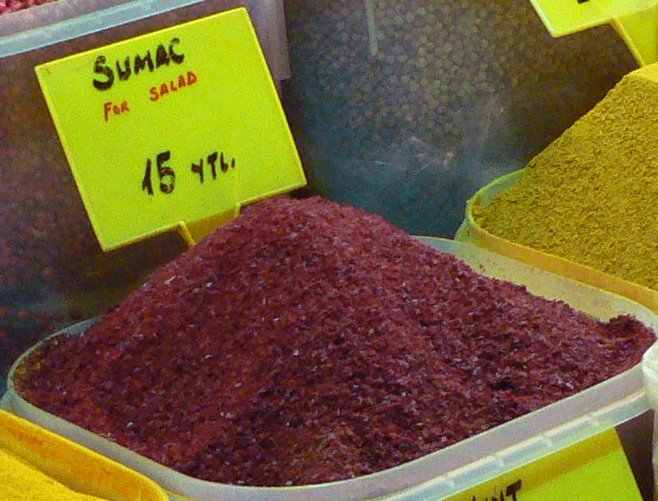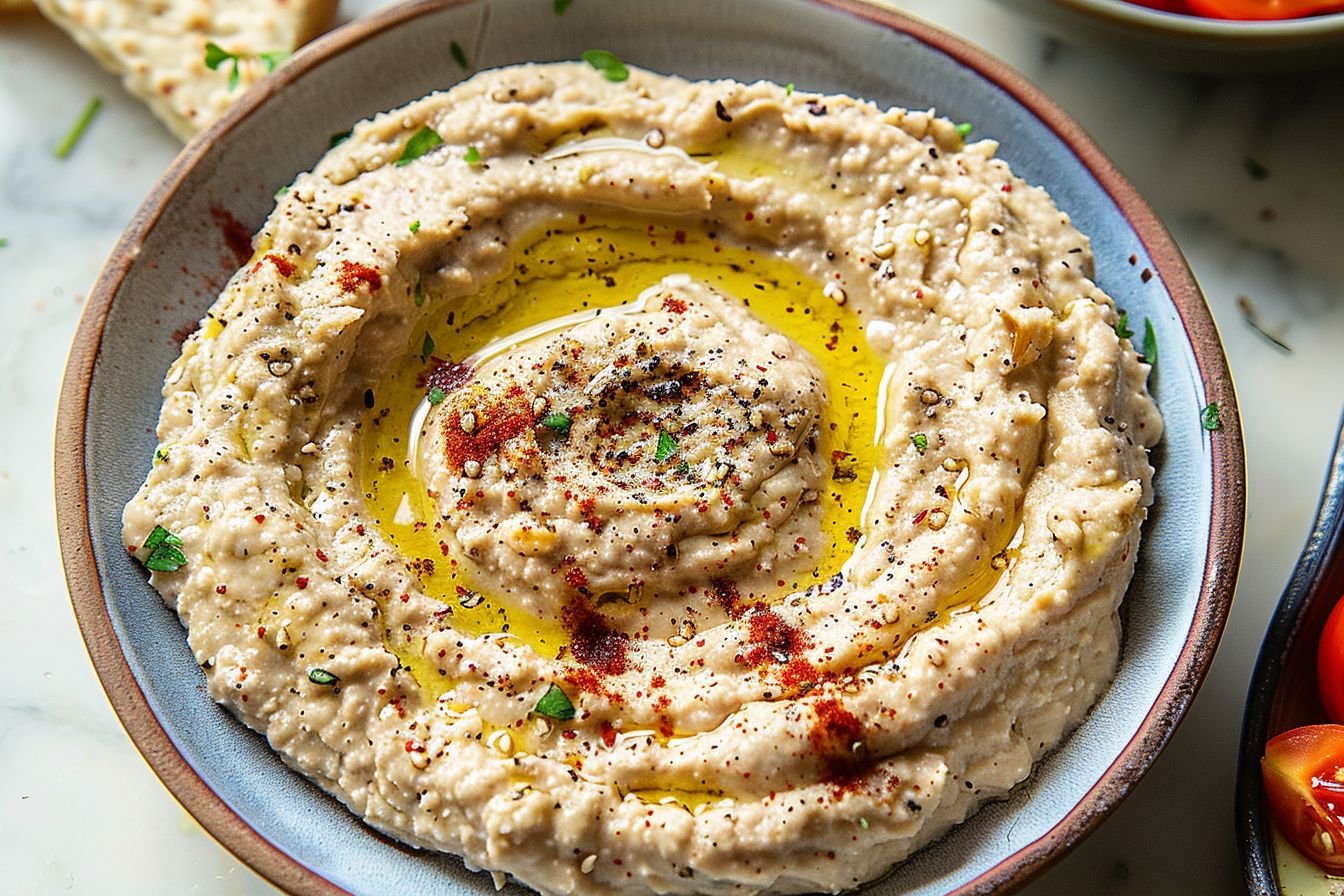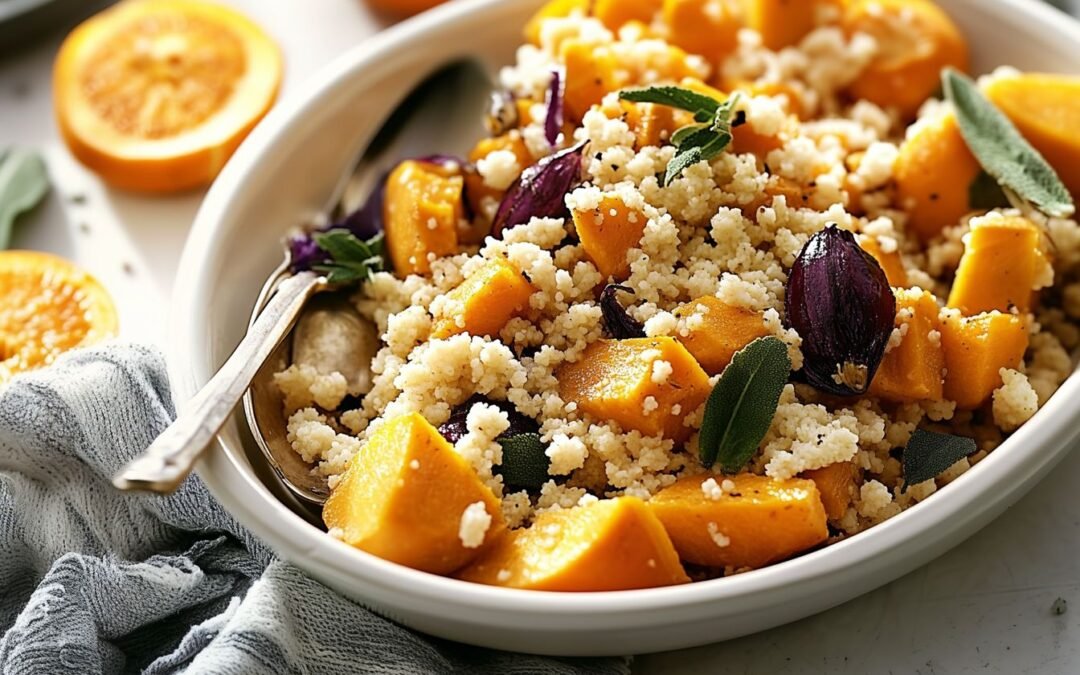Baba ganoush with sumac is a creamy and flavorful Middle Eastern dip that is perfect as an appetizer or snack.
To make this delicious dip, you will need two medium eggplants, garlic, lemon juice, tahini, olive oil, salt, and sumac. Once you have all the ingredients, you can prepare the baba ganoush.
History of Baba Ganoush
Baba ganoush is a delicious Mediterranean dip commonly served with pita bread or vegetables. The exact origin of baba ganoush is unknown, but it is believed to have been around for centuries. Some say that it was first made by the Bedouin tribes who roamed the deserts of the Middle East. Others believe that the Ottoman Empire created it during their reign in the region.
Regardless of its origin, baba ganoush has become a popular dish around the world. It is often served as an appetizer or side dish at Mediterranean restaurants and is a staple in many Middle Eastern households.
In recent years, baba ganoush has gained popularity in the United States and other Western countries. It is a great alternative to traditional dips like hummus and salsa and is a healthy and flavorful option for snacking.
Culinary Uses of Sumac
Sumac is a versatile spice that adds a tangy, lemony flavor to dishes. In Middle Eastern and Mediterranean cuisine, it is commonly used in salads, marinades, and meat dishes. Here are a few ways I like to use sumac in my cooking:
- As a seasoning for roasted vegetables
- In dips and spreads
- As a rub for grilled meats
- In salad dressings

Ingredients:
- 2 medium eggplants
- 2 cloves of garlic
- Juice of ½ lemon
- 2 tablespoons of tahini
- 2 tablespoons of olive oil
- Salt to taste
- ½ teaspoon of sumac
How to Make Baba Ganoush with Sumac?
-
Begin by preheating your oven to the broil setting. Using a fork, gently pierce the skin of each eggplant several times. Arrange the eggplants on a baking sheet and position them approximately 6 inches from the broiler element. Broil the eggplants for 20 minutes per side, or until the skin is charred and the flesh is very soft.
-
Once the eggplants are cool enough to handle, remove the skin. You’ll find it peels away easily. Add the roasted eggplant flesh to a food processor. Next, incorporate the garlic, lemon juice, tahini, olive oil, and salt. Process the mixture until it reaches a smooth and creamy consistency. Taste the Baba Ganoush and adjust the seasoning with additional salt, if necessary. Alternatively, for a less homogenous texture, finely chop the roasted eggplant and combine it with the other ingredients.
-
Transfer the Baba Ganoush to a serving dish. Drizzle the top with olive oil and sprinkle with sumac for an extra flavor dimension. Enjoy your Baba Ganoush with pita bread, and crudités (cut-up raw vegetables for dipping), or spread it on toasted bread for a delightful sandwich.
Serving Suggestions
Accompaniments
When serving baba ganoush, there are many delicious accompaniments to choose from. Some of my favorites include pita bread, crackers, and sliced vegetables such as cucumbers, carrots, and olives. These options all provide a nice contrast in texture and flavor to the creamy and tangy baba ganoush.
For a more substantial meal, you can also serve baba ganoush with sumac alongside grilled meats such as chicken or lamb. The smoky flavors of the grilled meat pair perfectly with the rich and savory baba ganoush.
Plating Tips
To make your baba ganoush look as good as it tastes, keep in mind a few plating tips. First, be sure to use a shallow bowl or plate to showcase the vibrant purple color of the baba ganoush.
Next, drizzle a little bit of olive oil over the top of the baba ganoush and sprinkle some sumac on top. This not only adds flavor but also makes for an attractive presentation.
Finally, garnish the baba ganoush with some fresh herbs such as parsley or mint. Not only do the herbs add a pop of color, but they also provide a refreshing contrast to the rich and creamy baba ganoush.
Nutritional Information
Baba ganoush with sumac is a delicious and healthy option for a snack or appetizer. Here are some key nutritional facts:
- Baba ganoush is low in calories, with only about 80 calories per 100 grams.
- It’s a good source of dietary fiber, with about 5 grams per 100 grams.
- Baba ganoush is also a good source of healthy fats, with about 6 grams of monounsaturated and polyunsaturated fats per 100 grams.
- It’s high in vitamins and minerals, including vitamin C, vitamin K, and potassium.
Sumac, the spice used in this recipe, also has some great nutritional benefits:
- Sumac is high in antioxidants, which can help protect against cell damage and inflammation.
- It’s also a good source of vitamin C, with about 4 times as much as an orange per gram.
- Sumac has been shown to have antimicrobial and anti-inflammatory properties.
Variations of Baba Ganoush
With Roasted Red Peppers
I love adding roasted red peppers to my baba ganoush recipe for an extra depth of flavor. To make it, simply roast a red pepper until the skin is charred, then peel and chop it into small pieces. Add the roasted red pepper to the baba ganoush mixture and blend until smooth. The result is a deliciously smoky and sweet dip that pairs perfectly with pita chips or fresh veggies.
With Pomegranate Molasses
For a tangy twist on the classic baba ganoush recipe, I like to add a drizzle of pomegranate molasses. It adds a sweet and sour flavor that complements the smoky eggplant perfectly. To make it, simply mix a tablespoon of pomegranate molasses into the baba ganoush mixture before serving. You can also sprinkle some pomegranate seeds on top for a pop of color and texture.
With Greek Yogurt
For a creamier and lighter version of baba ganoush, I sometimes add Greek yogurt to the mix. It adds a tangy flavor and a silky texture that pairs well with the smoky eggplant. To make it, simply blend some Greek yogurt with the baba ganoush mixture until smooth. You can adjust the amount of yogurt to your liking, depending on how creamy you want it to be.
Storing and Preservation Tips
Firstly, baba ganoush should be stored in an airtight container in the refrigerator. This will help to prevent any moisture from getting in and causing the dip to spoil. I usually prefer to use glass containers because they are easy to clean and don’t retain any odors or flavors.
It’s also important to note that it can be frozen for later use. Simply transfer it to a freezer-safe container and store it in the freezer for up to 3 months. To thaw, simply place it in the refrigerator overnight.
When I want to serve it, I like to give it a quick stir before serving to ensure that all of the flavors are evenly distributed. You can also sprinkle some extra sumac on top for an added burst of flavor.
Common Mistakes to Avoid
Overcooking the eggplant
One of the biggest mistakes people make when making baba ganoush is overcooking the eggplant. If the eggplant is cooked for too long, it will become mushy and lose its flavor. To avoid this, I recommend roasting the eggplant until it is tender, but not falling apart. This should take about 30-40 minutes, depending on the size of the eggplant.
Using too much sumac
While sumac is a key ingredient here, it’s important not to go overboard. Using too much sumac can overpower the other flavors and make the dish too tart. I recommend starting with a small amount and adding more to taste.
Not letting the flavors meld
Baba ganoush with sumac is best when the flavors have had a chance to meld together. If you serve it immediately after making it, the flavors won’t have a chance to fully develop. I recommend letting it sit in the fridge for at least an hour before serving.
Conclusion
I hope you enjoyed reading about my experience making baba ganoush with sumac. I found this recipe to be a fun and tasty way to switch up my usual dip routine. The combination of roasted eggplant, tahini, and sumac created a unique flavor profile that I will be making again in the future.
One thing I appreciated about this recipe was how easy it was to customize. If you prefer a more garlicky flavor, you can add more garlic. If you want a smoother texture, you can blend the dip for longer. And if you don’t have sumac on hand, you can always substitute with another spice.
Overall, I would highly recommend giving this recipe a try. It’s a great way to impress your friends and family at your next gathering or to enjoy it as a snack on a lazy afternoon. Happy cooking!
By the way, this dip pairs perfectly with mujadara with red lentils
Get that recipe now (by clicking the image below:





